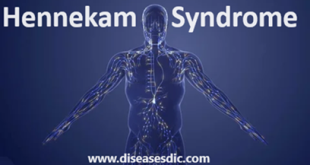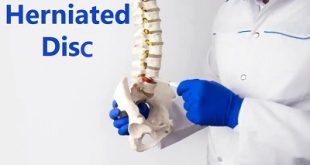What is Hirsutism?
Hirsutism is excessive hair growth in certain areas of a woman’s face and body, such as the mustache and beard area, that creates a “male pattern” of hair. Women normally can have fine, pale, faintly visible hair in these areas, but heavy hair growth in a male pattern with coarse or colored hair is not expected.
Normal patterns of hair growth and hair distribution vary widely, determined mostly by racial background. For example, whites as a group have more facial and non-scalp hair growth than do blacks or Asians, and white women of Mediterranean heritage normally have more hair growth than do women from Nordic countries.
Hirsutism in women means that hair follicles are being over-stimulated by testosterone or other androgen hormones. Androgens are the dominant sex hormones in men. Women normally have low levels of androgens. Hirsutism can be caused by abnormally high levels of androgens or abnormal stimulation of hair follicles even when androgen levels are normal.
Pathophysiology of hirsutism
Hormones and the intrinsic characteristics of the hair follicle determine the quality of hair growth. Vellus hairs are fine, lightly pigmented hairs that cover most of the body before puberty. Pubertal androgens promote the conversion of these vellus hairs to coarser, pigmented terminal hairs. The level and duration of exposure to androgens, the local 5-alpha-reductase activity, and the intrinsic sensitivity of the hair follicle to androgen action determine the extent of conversion from vellus to terminal hair. However, some terminal hair growth is androgen-independent (eg, scalp, eyebrows, lashes).
The development of terminal hair or reversion back to a vellus pattern may not be immediately evident because of the characteristics of the hair cycle. This cycle has 2 phases that include active hair growth (anagen phase) and a resting period (telogen phase), which follows the anagen phase. During the resting period, the hair shaft separates from the dermal papillae at the follicle base, and no further growth takes place. Eventually, growth restarts and the new hair shaft formed by the reactivated papillae pushes the old hair out. The cycle may take months to years to complete, and this causes a delay in hair growth response to changes in the androgen milieu.
Dihydrotestosterone is the androgen that acts on the hair follicle to produce terminal hair. This hormone is derived from both the bloodstream and local conversion of a precursor, testosterone. The local production of dihydrotestosterone is determined by 5-alpha-reductase activity in the skin. Differences in the activity of this enzyme may explain why women with the same plasma levels of testosterone can have different degrees of hirsutism.
What causes hirsutism?
In many cases, the exact cause of hirsutism is not known. However, there are several conditions that are known to cause hirsutism. These conditions include:
The natural production of male hormones (androgens). Women naturally produce androgen, however, if a woman’s androgen levels are higher than normal, or if her hair follicles are more sensitive to androgens, she may develop hirsutism.
Polycystic ovarian syndrome (PCOS) is a common hormonal condition that causes a woman to produce too many androgens. Women with PCOS may also have acne, irregular or absent menstrual periods, diabetes, weight gain, and/or problems with fertility.
The hormonal changes of menopause may lead to increased facial hair (mustache and whiskers).
Other more serious conditions. Hirsutism that occurs suddenly along with other male characteristics, such as a deeper voice, acne or increased muscle mass, may be caused by a more serious condition, such as disorders of the adrenal glands or ovaries.
Medications. The following medications can cause hirsutism:
- Anabolic steroids
- Testosterone
- Glucocorticoids
- Cyclosporine (Sandimmune®)
- Minoxidil (Loniten®, Rogaine®)
- Danazol (Danocrine®)
- Phenytoin (Dilantin®)
Risk factors
Several factors can influence your likelihood of developing hirsutism, including:
- Family history. Several conditions that cause hirsutism, including congenital adrenal hyperplasia and polycystic ovary syndrome, run in families.
- Women of Mediterranean, Middle Eastern and South Asian ancestry are more likely to have more body hair with no identifiable cause than are other women.
- Being obese causes increased androgen production, which can worsen hirsutism.
Symptoms
Hirsutism is stiff or dark body hair, appearing on the body where women don’t commonly have hair – primarily the face, chest, lower abdomen, inner thighs and back. People have widely varying opinions on what’s considered excessive.
When high androgen levels cause hirsutism, other signs might develop over time, a process called virilization. Signs of virilization might include:
- Deepening voice
- Balding
- Acne
- Decreased breast size
- Increased muscle mass
- Enlargement of the clitoris
Complications
- Hirsutism may have a detrimental impact on a woman’s body image.
- Facial hirsutism may cause considerable emotional distress and social embarrassment to women; hirsutism exceeding culturally normal levels can be very distressing.
- Hirsutism is commonly associated with lower quality of life and symptoms of anxiety and depression
Diagnosis and test
A physician will look at the medical history with a special focus on the menstrual cycle. If the individual has a regular pattern of menstrual periods, the hirsutism is likely to have a genetic or inherited cause.
If menstruation has always been irregular, the cause could be polycystic ovary syndrome (PCOS).
If both the hirsutism and menstrual irregularity have onset recently, and if the woman is missing periods, the healthcare professional may carry out tests for a condition that could be more serious, such as a tumor of the ovaries, adrenal glands, or pituitary gland.
By measuring levels of testosterone and DHEA in the blood, a doctor can check for signs of PCOS, ovarian tumors, adrenal gland tumors, or tumors that can stimulate the adrenal glands.
In cases of mild hirsutism, in which no other symptoms suggesting overproduction of androgen hormones, further testing may not be necessary.
If more testing is necessary, several blood tests are available to test for deficiencies in the adrenal gland hormones. This can cause overgrowth of the adrenal glands.
Blood tests include tests for hormones like:
- 17-hydroxyprogesterone levels
- TSH (thyroid-stimulating hormone)
- Prolactin
- Testosterone (to determine if higher androgen levels is the cause)
- Cortisol
The following might also help to identify tumors or physical irregularities that could have led to hirsutism:
- MRI scans of the brain
- CT scan of the adrenal glands
- An ultrasound of the ovaries
Treatments
If you have more facial or body hair than you want, there are a number of ways you can remove it.
Weight loss. If you’re overweight and drop pounds, your body should make fewer male hormones, so you should grow less hair on your face or body.
Shaving. You can remove unwanted hair easily with a razor or electric shaver. You may need to shave daily to avoid stubble growth. Some people get razor burn from shaving too often, but a soothing cream may help.
Tweezing or threading. There are different ways to pluck hair out at the root. You can use tweezers. Or you can hire someone to “thread” — use a long, tight strand to loop around and remove each unwanted hair. These methods can cause pain and redness.
Waxing. A quick way to remove lots of unwanted hair by the root is with melted wax. Often you get this done in a salon. Wax is applied to the skin, then removed quickly. It can cause pain and redness.
Creams. Some creams have strong chemicals called depilatories. You apply the cream, let it sit for a while, and when you wipe it off, the hair goes with it. They can irritate sensitive skin, so test a small spot before you use one on a large area.
Electrolysis. You can remove hair for good with electrolysis, a pricey service that zaps hair at the root with an electric current. After you repeat the process a few times, hair should stop growing in treated areas.
Laser Hair Removal. The heat from lasers can remove hair, but you need to repeat the process a few times, and it sometimes grows back. The treatment targets hair at the root, so it’s painful and could damage or scar your skin.
Medication. Doctors can prescribe drugs that change the way your body grows hair. When you stop using the medication, hair will grow back, though.
- Birth control pills make the body produce fewer male hormones. With regular use, you should have less hair on your face or body.
- Anti-androgen blockers help your body make and use fewer male hormones, so you should grow less hair over time.
- Vaniqa (eflornithine) is a face cream that slows hair growth where you apply it.
Prevention Tips
- Hirsutism can be prevented with measures such as losing weight if you are overweight, as this can reduce androgen production. Also, if you have polycystic ovary syndrome, controlling obesity may reduce hirsutism.
- In some cases, hirsutism may be prevented by not taking a medicine that can cause excess hair growth.
- Reduce your calorie intake, especially during the evening. Distribute your calorie intake into 5-6 small meals with the breakfast being the heaviest. This will keep your weight under control and reduce the chances of obesity and hirsutism.
- Eat foods with a low glycemic index which do not increase blood glucose levels sharply such as non-starchy vegetables, legumes and fruits. Include enough amounts of protein in your diet. Keep control on your daily intake of fats, but don’t eliminate all fats especially essential fatty acids.
- Glycyrrhizin from licorice has been found to reduce plasma testosterone levels and may be useful in hirsutism patients. However, excess use does have its side effects.
- Increase your intake of vitamin B, especially B2, B3, B5 and B6. The trace minerals chromium and magnesium reduce glucose resistance and will be useful.
 Diseases Treatments Dictionary This is complete solution to read all diseases treatments Which covers Prevention, Causes, Symptoms, Medical Terms, Drugs, Prescription, Natural Remedies with cures and Treatments. Most of the common diseases were listed in names, split with categories.
Diseases Treatments Dictionary This is complete solution to read all diseases treatments Which covers Prevention, Causes, Symptoms, Medical Terms, Drugs, Prescription, Natural Remedies with cures and Treatments. Most of the common diseases were listed in names, split with categories.







